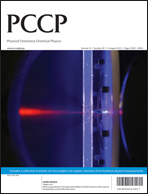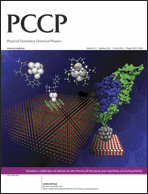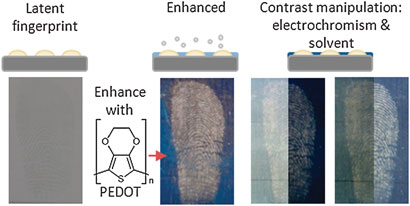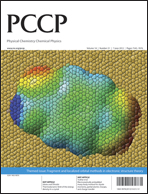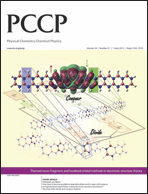This month sees the following articles in PCCP that are in the top ten most accessed in June:
Low-temperature ZnO atomic layer deposition on biotemplates: flexible photocatalytic ZnO structures from eggshell membranes
Seung-Mo Lee, Gregor Grass, Gyeong-Man Kim, Christian Dresbach, Lianbing Zhang, Ulrich Gösele and Mato Knez
Phys. Chem. Chem. Phys., 2009, 11, 3608-3614
DOI: 10.1039/B820436E
The electrochemistry of CVD graphene: progress and prospects
Dale A. C. Brownson and Craig E. Banks
Phys. Chem. Chem. Phys., 2012, 14, 8264-8281
DOI: 10.1039/C2CP40225D
Gas phase metal cluster model systems for heterogeneous catalysis
Sandra M. Lang and Thorsten M. Bernhardt
Phys. Chem. Chem. Phys., 2012, 14, 9255-9269
DOI: 10.1039/C2CP40660H
Excited state intramolecular proton transfer (ESIPT): from principal photophysics to the development of new chromophores and applications in fluorescent molecular probes and luminescent materials
Jianzhang Zhao, Shaomin Ji, Yinghui Chen, Huimin Guo and Pei Yang
Phys. Chem. Chem. Phys., 2012, 14, 8803-8817
DOI: 10.1039/C2CP23144A
From VO2 (B) to VO2 (A) nanobelts: first hydrothermal transformation, spectroscopic study and first principles calculation
Shudong Zhang, Bo Shang, Jinlong Yang, Wensheng Yan, Shiqiang Wei and Yi Xie
Phys. Chem. Chem. Phys., 2011, 13, 15873-15881
DOI: 10.1039/C1CP20838A
Quantum chemistry simulation on quantum computers: theories and experiments
Dawei Lu, Boruo Xu, Nanyang Xu, Zhaokai Li, Hongwei Chen, Xinhua Peng, Ruixue Xu and Jiangfeng Du
Phys. Chem. Chem. Phys., 2012, 14, 9411-9420
DOI: 10.1039/C2CP23700H
Cu2ZnSnS4 (CZTS) nanoparticle based nontoxic and earth-abundant hybrid pn-junction solar cells
Sudip K. Saha, Asim Guchhait and Amlan J. Pal
Phys. Chem. Chem. Phys., 2012, 14, 8090-8096
DOI: 10.1039/C2CP41062A
The role of hydrogen bonding in excited state intramolecular charge transfer
Francis A. S. Chipem, Anasuya Mishra and G. Krishnamoorthy
Phys. Chem. Chem. Phys., 2012, 14, 8775-8790
DOI: 10.1039/C2CP23879A
A microporous–mesoporous carbon with graphitic structure for a high-rate stable sulfur cathode in carbonate solvent-based Li–S batteries
Da-Wei Wang, Guangmin Zhou, Feng Li, Kuang-Hsu Wu, Gao Qing (Max) Lu, Hui-Ming Cheng and Ian R. Gentle
Phys. Chem. Chem. Phys., 2012, 14, 8703-8710
DOI: 10.1039/C2CP40808B
Structure and dynamics of water at a clay surface from molecular dynamics simulation
Virginie Marry, Benjamin Rotenberg and Pierre Turq
Phys. Chem. Chem. Phys., 2008, 10, 4802-4813
DOI: 10.1039/B807288D
Why not take a look at the articles today and blog your thoughts and comments below.
Fancy submitting an article to PCCP? Then why not submit to us today!











